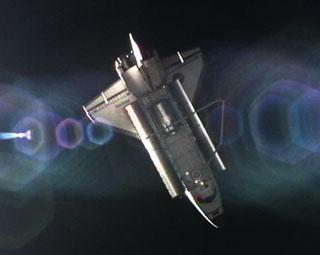
WASHINGTON (PTI): It's been believed that huge black holes are born in galaxy collisions, but a new research has now claimed that mysterious forces within the galaxies might be to blame.
At the heart of all large galaxies are supermassive black holes million to billions of times the mass of the Sun.
In many galaxies, including our Milky Way, the central black hole is quiet, but in others known as active galaxies, matter at the nucleus of the galaxy gives off intense radiation as it gets sucked into the core black hole.
Scientists had thought that most active galactic nuclei were triggered by two galaxies merging or passing close to each other. Such titanic disturbances could drive material from a galaxy's disk toward its core.
But, now an international team of scientists working on the COSMOS (Cosmological Evolution Survey) experiment found that these monumental disruptions are often not to blame for activating the black holes, LiveScience reported.
The team observed over 600 active galaxies using the European Space Agency's XMM-Newton space observatory and the European Southern Observatory's Very Large Telescope in Chile.
Their investigation allowed them to make a 3-D map showing the locations of the active galaxies. Because light takes time to travel, knowing the distance of these galaxies from Earth also helped reveal their ages.
"It took more than five years, but we were able to provide one of the largest and most complete inventories of active galaxies in the X-ray sky," said researcher Marcella Brusa of the Max Planck Institute for Extraterrestrial Physics at Garching, Germany.
The scientists, who detailed their findings in the Astrophysical Journal, found that though a few of the active galaxies were extremely brilliant, most of them were only moderately bright.
They also found that galactic collisions were not responsible for activating most of the more common, moderately bright active galactic nuclei.
If active nuclei were the consequences of colliding galaxies, as had been expected, scientists would have found them in galaxies with only moderate masses -- those about a trillion times the mass of the sun.
Instead, the researchers found that most active nuclei reside in galaxies with masses about 20 times larger than the collision theory had predicted -- galaxies that contain lots of the invisible, as-yet-unidentified dark matter that makes up about 85 per cent of all matter in the universe.
Even in the distant past, up to almost 11 billion years ago, when the universe was only about 2.7 billion years old, "galaxy collisions can only account for a small percentage of the moderately bright active galaxies," said Alexis Finoguenov at the Max Planck.
"At that time galaxies were closer together so mergers were expected to be more frequent than in the more recent past, so the new results are all the more surprising."
The study gives us a new insight into how supermassive black holes start their meals,” the researcher said, adding that the results indicate that “a black hole is usually fed by processes within the galaxy itself."
 Previous Article
Previous Article Next Article
Next Article













The Indian Air Force, in its flight trials evaluation report submitted before the Defence Ministry l..
view articleAn insight into the Medium Multi-Role Combat Aircraft competition...
view articleSky enthusiasts can now spot the International Space Station (ISS) commanded by Indian-American astr..
view article